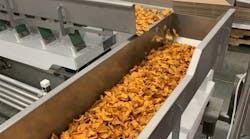Combine a heritage in visualization, machine control and production management with process control expertise drawn from one of the worlds storied manufacturing conglomerates, and it seems only natural that GE Fanuc eventually would identify the hybrid and continuous process industries as a key growth market. Proficy Process Systems consists of a robust function-block library for implementing advanced PID (proportional-integral-derivative) control strategies, and even a multi-variable predictive control engine borrowed from sister company GE Energys turbine control expertise. Another GE technology central to Proficys new process functionality is high-speed reflective memory.
In the first system iteration, full redundancy will be supported in the PACSystems RX7i controllers (VME-based form factor), but will be added to the PACSystems RX3i (CompactPCI-based form factor) by years end. The system supports the expected alphabet soup of device and fieldbus protocols (see architecture diagram), as well as OPC-based integration of third-party controllers.
And when it comes to visualization, GE Fanuc engineers have committed to bringing forward both the iFix and Cimplicity toolsets, each of which has a longstanding and loyal following in a variety of industries. Theres also considerable new process functionality under the hood at the application level, starting with a historian and change management server that includes audit trail functions for control logic and visualization. And, while technically part of the companys larger Proficy Process Solutions offering, integrated Batch Execution and Batch Analysis modules complement the companys industry-leading production management and ERP connectivity solutions.
The company has taken a measured approach to identifying its initial target markets, focusing on those continuous and hybrid industries and applications where it has expertise and/or market access through its existing user base. In the batch/hybrid industries these include mixing, brewing, fermenting, and syrup room applications in the food and beverage arena; solution prep and biotech applications in life sciences; mixing and blending apps for personal care products; and a range of fermentation and separation functions in the rapidly expanding ethanol industry. On the continuous side, target applications include in-plant processing of water and wastewater.





